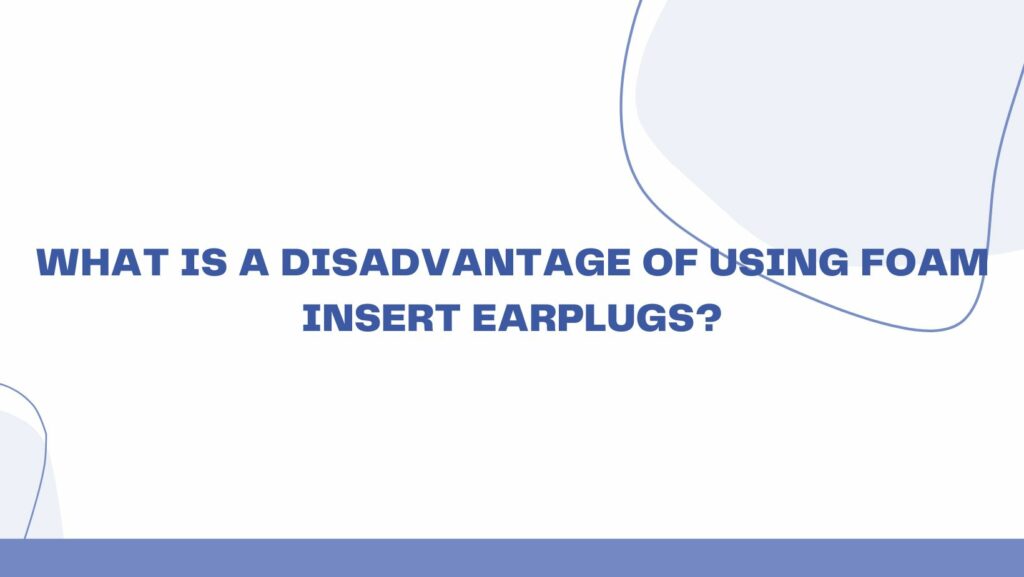Earplugs have become indispensable tools for individuals seeking refuge from the ceaseless noise of the modern world. Among the various types available, foam insert earplugs have gained popularity for their effectiveness in noise reduction and comfort. However, as with any product, there are considerations to be made. In this exploration, we delve into the quieter side of the equation, shedding light on a disadvantage associated with the use of foam insert earplugs.
Disadvantage: Limited Reusability
While foam insert earplugs offer several advantages, such as superior noise reduction and comfort, a notable drawback lies in their limited reusability. Unlike some silicone earplugs, which can be cleaned and reused multiple times, most foam earplugs are designed for single or limited use.
- Hygiene Concerns: Foam earplugs are porous and absorbent, making them prone to collecting earwax, oils, and other debris over time. This can compromise the hygiene of the earplugs, especially with regular use. The accumulation of contaminants may lead to discomfort, an increased risk of ear infections, and a decrease in overall effectiveness.
- Diminished Performance: With each use, foam earplugs undergo compression and expansion during insertion and removal. This repetitive process can cause the foam to lose its resilience and effectiveness over time. As the foam becomes less elastic, it may struggle to form a secure seal in the ear canal, diminishing its ability to provide optimal noise reduction.
- Replacement Costs: Due to their disposable nature, users of foam insert earplugs may find themselves replacing them more frequently than reusable alternatives. This can result in ongoing costs that may accumulate over time, making them a less cost-effective solution for those seeking a long-term noise protection strategy.
- Environmental Impact: The disposability of foam earplugs contributes to environmental concerns. As these earplugs are often made of non-biodegradable materials, their frequent disposal can lead to increased waste. Environmentally conscious users may find this aspect of foam earplugs to be a disadvantage, especially when compared to more sustainable alternatives.
Mitigating the Disadvantage:
While limited reusability is a notable drawback, users can adopt certain practices to mitigate the disadvantages associated with foam insert earplugs:
- Regular Replacement: Adhering to a schedule of regular replacement can help ensure that foam earplugs maintain their effectiveness and hygiene.
- Proper Hygiene: Cleaning the earplugs as much as possible between uses can help alleviate hygiene concerns. Some foam earplugs are designed to be cleaned and reused a few times before disposal.
- Exploring Reusable Options: Users who prioritize sustainability and cost-effectiveness may consider exploring reusable earplug options, such as those made from silicone or other durable materials.
Conclusion:
While foam insert earplugs undeniably offer significant advantages in noise reduction and comfort, the limited reusability is an aspect that users should carefully consider. The choice between disposable and reusable earplugs ultimately depends on individual preferences, priorities, and the intended use. By understanding and mitigating the disadvantages associated with foam insert earplugs, users can make informed decisions that align with their needs for a quieter and more comfortable auditory experience.


